The forces released from firing the ammunition and the explosion of the bullet and gas affect the shotgun in terms of vibrations and recoil.
Being able to manage them, limiting their effects is essential for the shooter.
That is why we focus a lot on the use of a good stock because it is the key element that, with its ability to limit and manage the shotgun’s recoil and its effects, can make a difference in performance on the platform.
When talking about a “shotgun stock”, the mind immediately goes to that woody element that allows the shooter to hold and support the shotgun in the act of aiming and firing well. But in reality, it represents much more. In addition to being an extension of the shotgun and enclosing its mechanics, we know that it is an essential element for a successful shot.
In this article, we will take a closer look at:
- A brief analysis of the shotgun stock
- What are the functions of the shotgun stock?
- The choice of materials for a good shotgun stock
Let’s continue step by step.

A brief analysis of the shotgun stock
Before proceeding with the technical analysis of the stock, it is necessary to mention the anatomy of the shotgun stock, considering the existence of the two types of stocks most used for clay pigeon shooting:
- The solid wood stock
- The wood/aluminum stock
We have already talked about the advantages and disadvantages of adjustable and fixed stocks in one of our articles.
This analysis focuses on two aspects, one visual and apparent and one technical and more intrinsic.
Starting with an initial external examination, the stock’s woodworking, finishing, and enhancement of the grain give an aesthetic harmony to the whole shotgun.
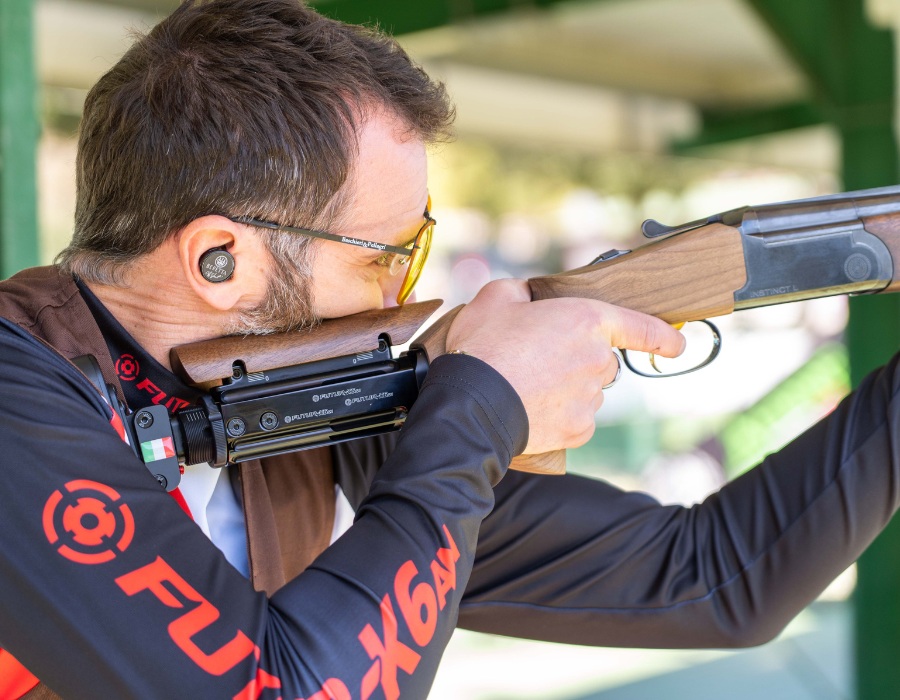
Similarly, a modern wood/aluminum stock gives the whole shotgun a more technical and contemporary aesthetic.
But, to be considered a valid as well as beautiful tool, it must reflect the shooter’s physical measurements and anatomical proportions in terms of:
- Length
- Deviation
- Fold
That is, respecting the real dimensions of the shooter’s arms, shoulders, and chest.
By doing this, this element will allow you to correctly align the eye with the rib and the gunsight, in harmony with the shooter’s aim setting.
These characteristics in a classic stock are achieved thanks to the intervention of a qualified craftsman, while in modern stock, a few steps are enough to customize it.
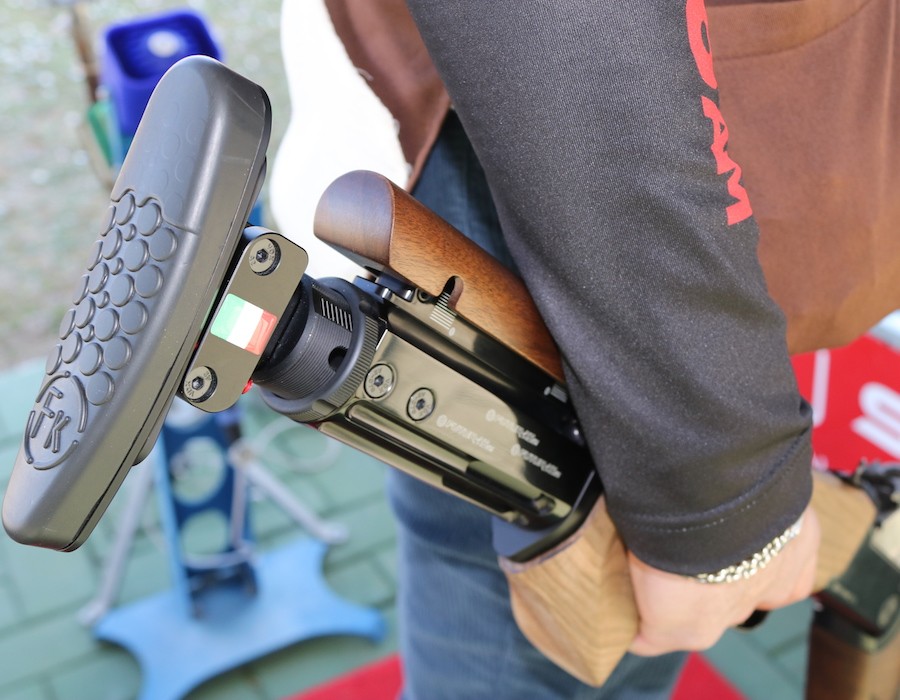
What are the functions of the shotgun stock?
By analyzing the stock from a more technical point of view, however, the shotgun stock, both in solid wood and in wood/aluminum, has a double basic function to obtain good results in shooting and in the ability to hit the target.
- The first function is to give balance to the shotgun thanks to a correct center of gravity
- The second is the ability to considerably limit the effects of shotgun recoil during the detonation and ejection of the bullet
These are both very important aspects, especially for shotguns intended for clay pigeon shooting in which hundreds of shots are fired per session and the concept of balance and shot setting are very important.
The balancing function of the shotgun stock
In clay pigeon shooting, but not only, having a correct center of gravity is very important.
This is affected by the type of stock mounted on the shotgun.
But what is its importance due to? Let us try to explain it.
Immediately after the detonation of the cartridge in the chamber, the wad with the swarm of pellets is ejected from the barrels immediately followed by the gas.
The shotgun recoil that is perceived as unique by the shooter is composed of these two moments which result in a rotation of the shotgun that occurs right around the center of gravity, in this phase, and not on the shoulder support point.
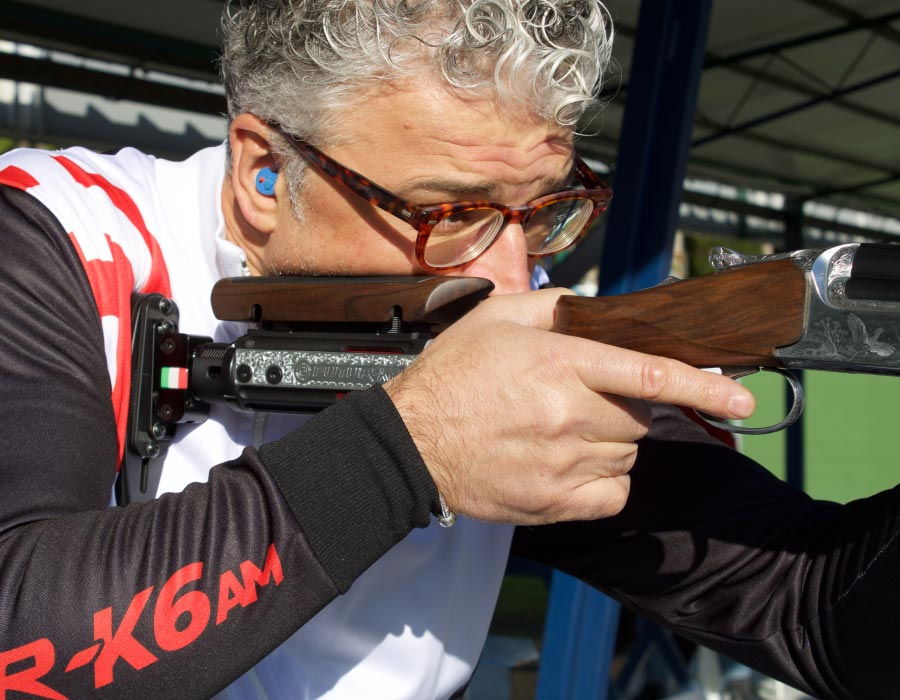
So, a shotgun that is too light, or has a center of gravity that is too advanced, causes a lowering of the barrels.
On the other hand, a center of gravity that is too far back causes a wheelie.
In both cases, the shooter loses line of sight and “contact” with the target.
The introduction of adjustable wooden and aluminum stocks has given us the right solution to the problem of those who frequently use classic commercial or unsuitable stocks.
In fact, among the advantages of the adjustable stock, their specific weight is sufficient to give balance to the whole shotgun.
Moreover, thanks to the ease of adjustment, they allow you to find the right solution in terms of center of gravity and balance for the shooter in just a few steps.
The stock’s ability to absorb shotgun recoil
Clay pigeon shooting, whether practiced at an amateur or professional level, involves the explosion of numerous shots.
The counterforce that is released by the detonation of the cartridge is commonly called “recoil”.
This force moves in the opposite direction to the release of the bullet, and its intensity is directly proportional to the liveliness of the powder and the speed of the cartridge, and what is used in this sport is always very appropriate.
The result is very abrupt and intense recoils.
To prevent this force from bothering the shooter in the long run, a lot of focus has been placed on the need to equip the shotguns with higher-level stocks capable of absorbing the shotgun recoil and distributing it over the entire support surface.
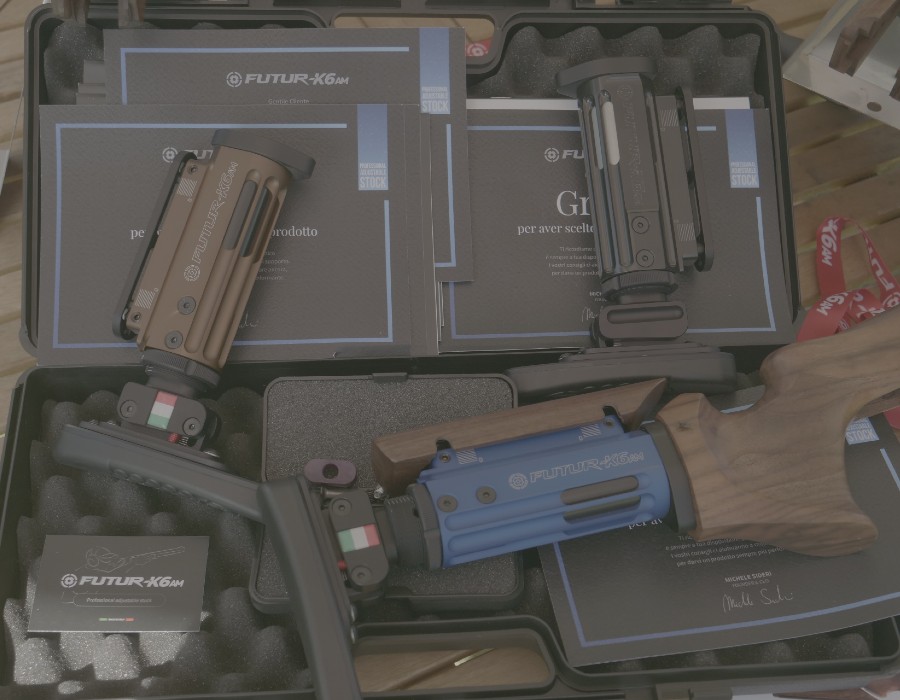
In addition, the stock was completed with shock-absorbing shotgun recoil pads capable of further absorbing the effects of the kickback, limiting shoulder fatigue.
If a solid wood stock is used, the shooter must pay attention to the consistency of the material and the length of the fibers, relying on the advice of a skilled craftsman.
While if you use a modern wood/aluminum stock, such as the Futur-K6AM, you can decide for yourself what level of cushioning to choose simply by replacing the internal rubber pads.
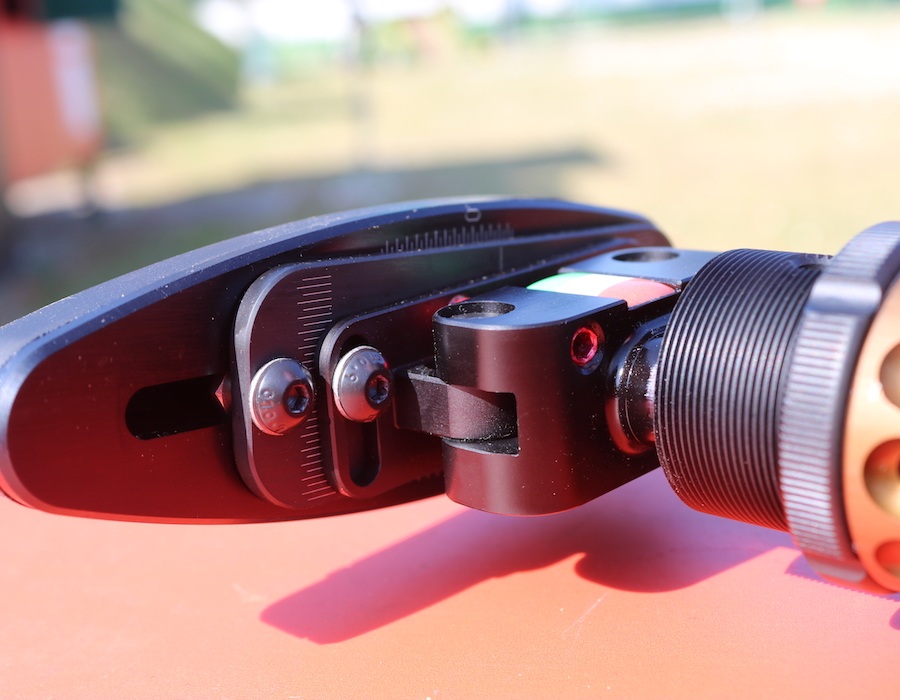
The choice of materials for a good shotgun stock
Choosing the right materials for your stock is difficult and a much-debated issue. But it is worth knowing that the performance and technical capabilities of a solid wood stock are linked to precise and important factors.
1 – The fact that the shotgun’s stock is made of wood from the walnut root is not a coincidence. In fact, this material was chosen and selected among many others, as well as for the aesthetic aspect, precisely for the possibility of combining strength, lightness, and shock absorption capacity.
2 – The finest stocks are selected based on woodcuts that respect the texture of the wood and the natural grain. Because, thanks to the long fibers, a good stock can better absorb and distribute the effects of shotgun recoil, while a stock with low material density, with short fibers and veins, will only transmit the vibrations of the recoil to the shooter’s cheekbone and shoulder.
3 – The possibility of using a wooden/aluminum stock facilitates the shooter’s choice, and they will be able to opt for an element that, with a few simple elements and interventions, will be able to offer different degrees of cushioning, making the shooting experience much easier and less traumatic.


